Abstract
Data representing high, medium, and low response rates in constant and nonconstant patterns were generated by electromechanical equipment to determine whether the same data collected by time-sampling, interval recording, and frequency recording would be represented similarly by each method. Results indicated: (1) that time-sampling provided an extremely inaccurate estimate of responding, and (2) that interval recording accurately represented responding of low and medium rates, but grossly underestimated high-rate responding.
Keywords: behavioral recording, time sample, frequency recording, interval recording, response rates
Full text
PDF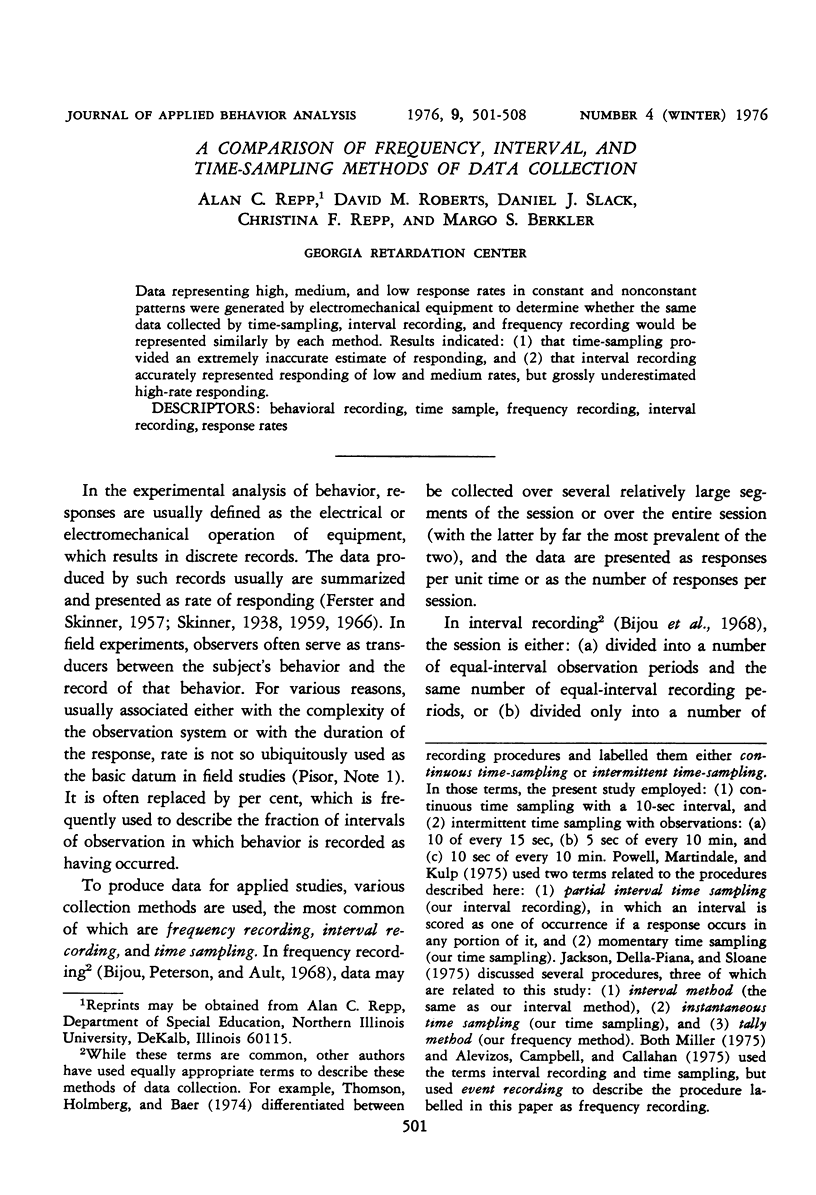
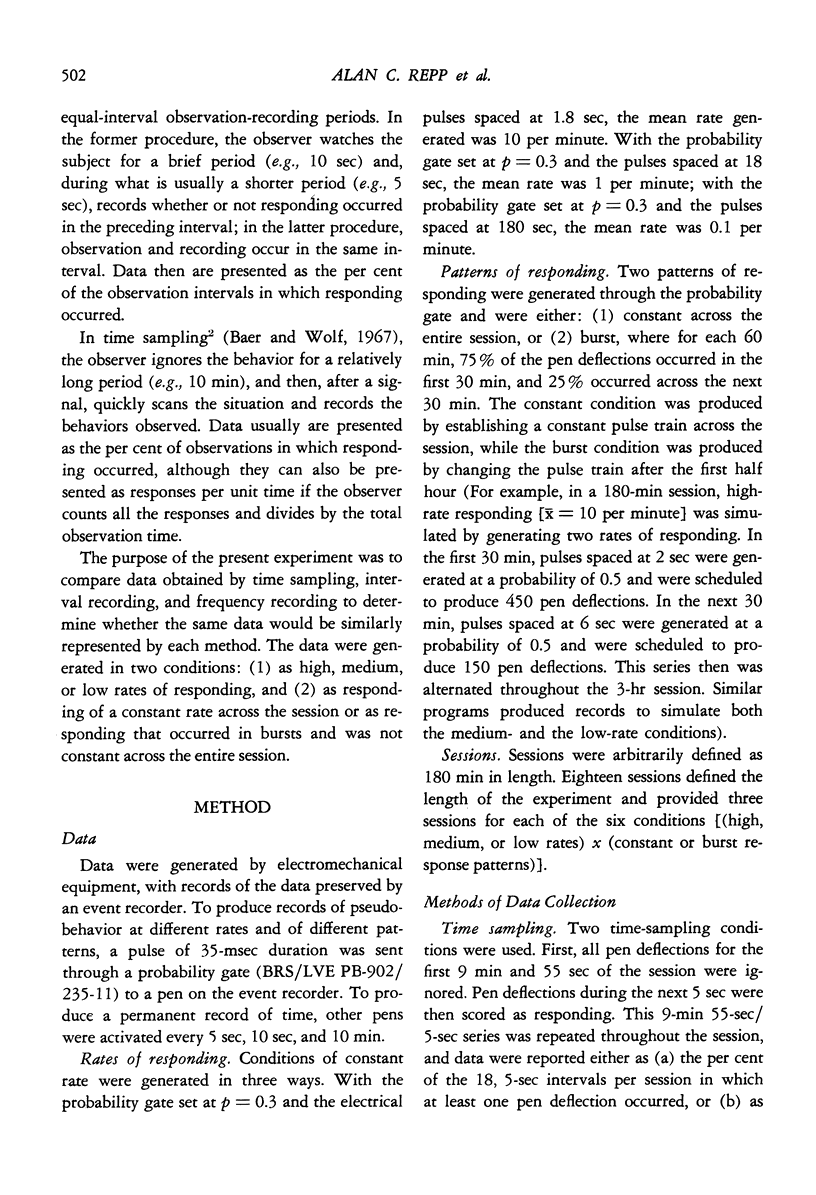
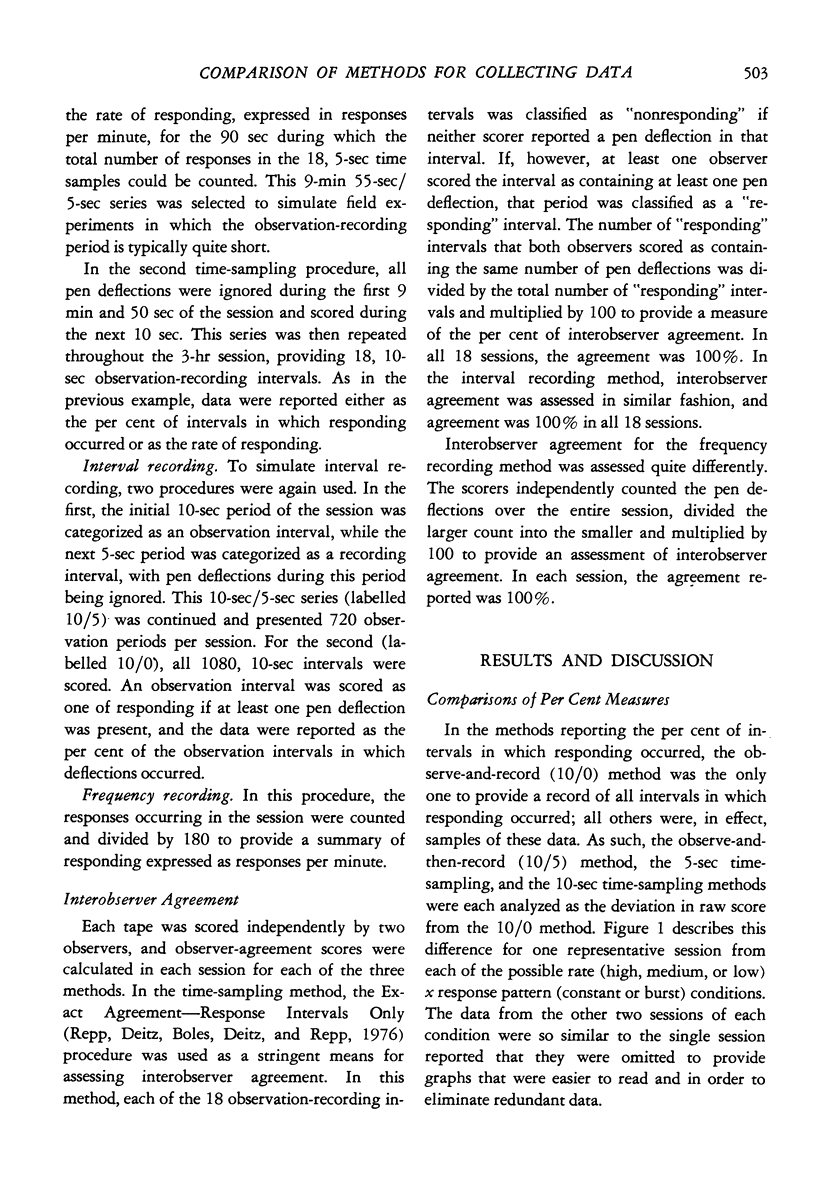
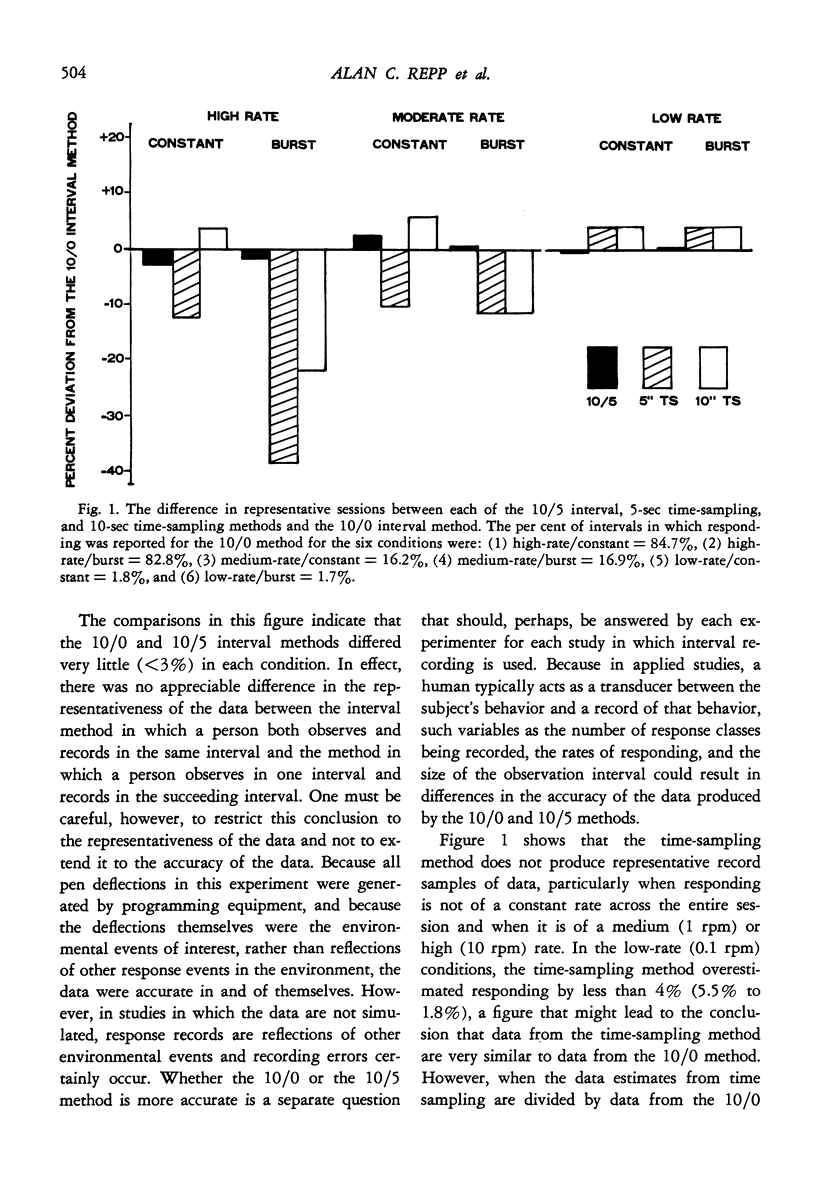
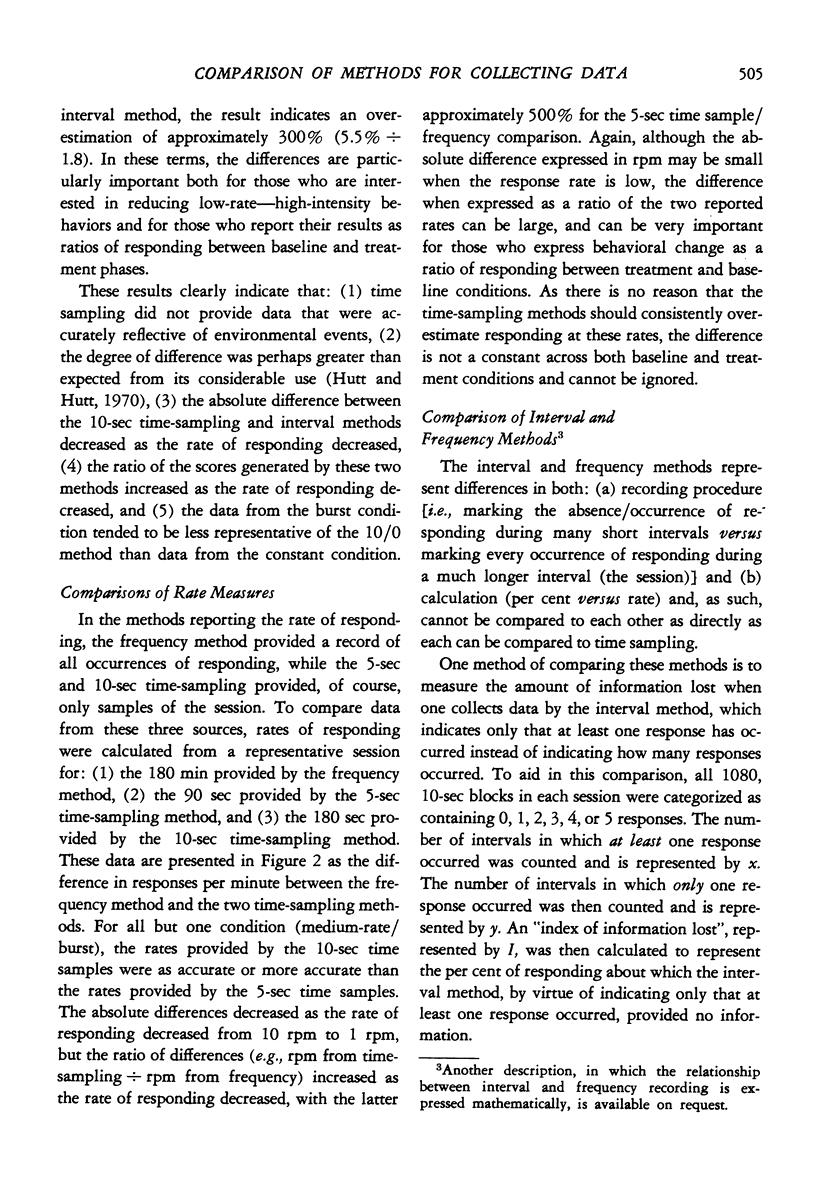
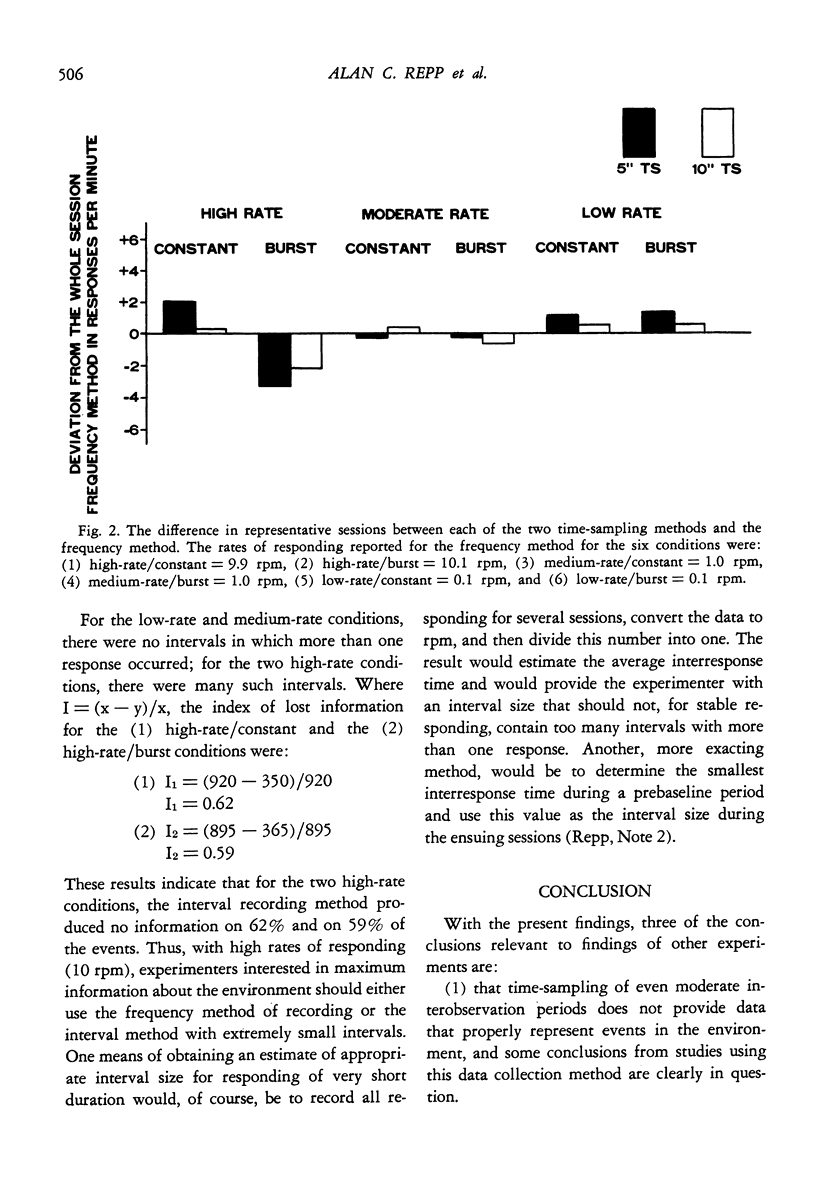
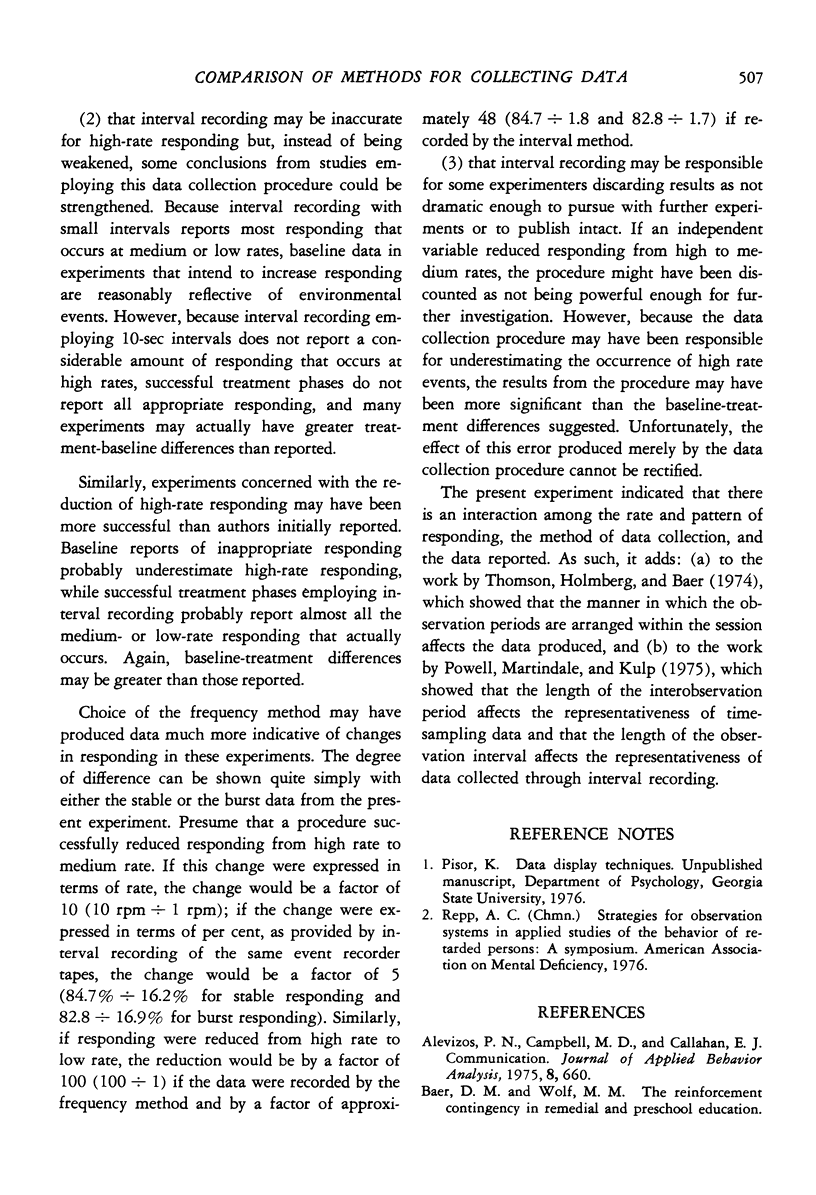
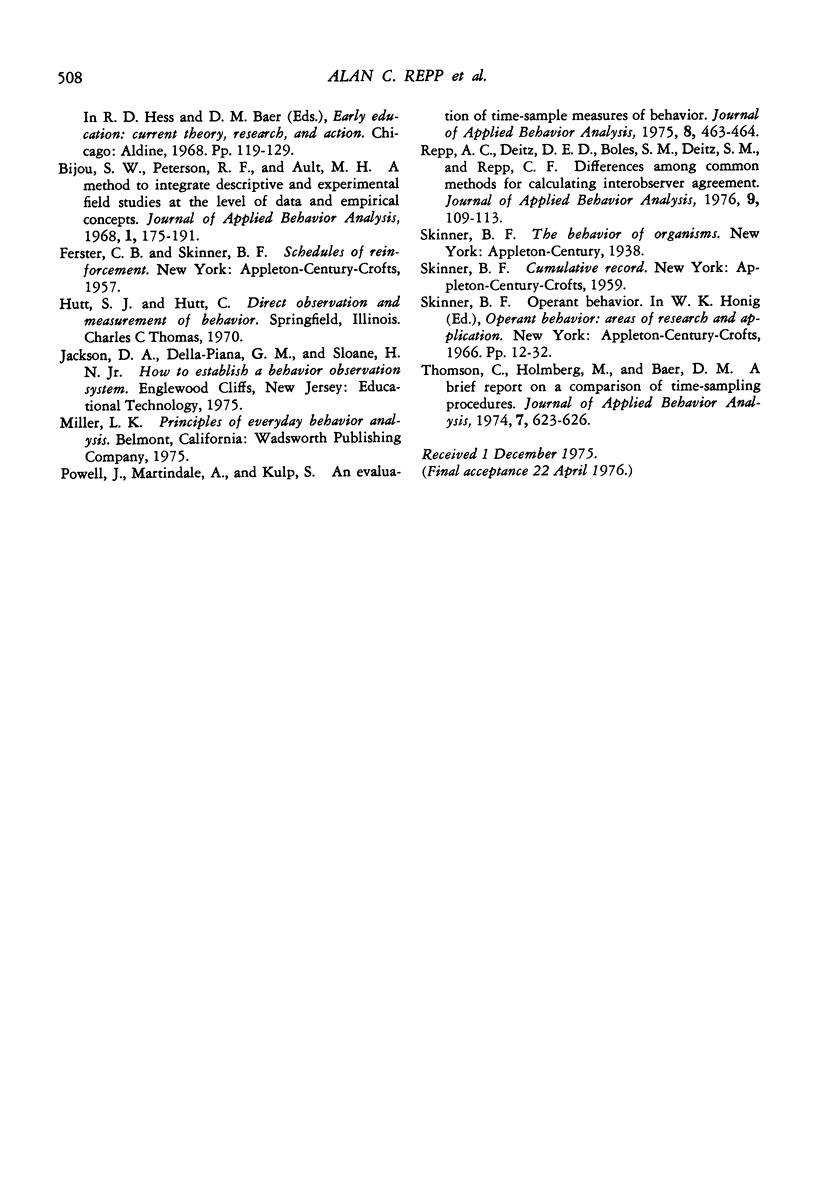
Selected References
These references are in PubMed. This may not be the complete list of references from this article.
- Bijou S. W., Peterson R. F., Ault M. H. A method to integrate descriptive and experimental field studies at the level of data and empirical concepts. J Appl Behav Anal. 1968 Summer;1(2):175–191. doi: 10.1901/jaba.1968.1-175. [DOI] [PMC free article] [PubMed] [Google Scholar]
- Powell J., Martindale A., Kulp S. An evaluation of time-sample measures of behavior. J Appl Behav Anal. 1975 Winter;8(4):463–469. doi: 10.1901/jaba.1975.8-463. [DOI] [PMC free article] [PubMed] [Google Scholar]
- Repp A. C., Deitz D. E., Boles S. M., Deitz S. M., Repp C. F. Differences among common methods for calculating interobserver agreement. J Appl Behav Anal. 1976 Spring;9(1):109–113. doi: 10.1901/jaba.1976.9-109. [DOI] [PMC free article] [PubMed] [Google Scholar]
- Thomson C. A brief report on a comparison of time-sampling procedures. J Appl Behav Anal. 1974 Winter;7(4):623–626. doi: 10.1901/jaba.1974.7-623. [DOI] [PMC free article] [PubMed] [Google Scholar]


